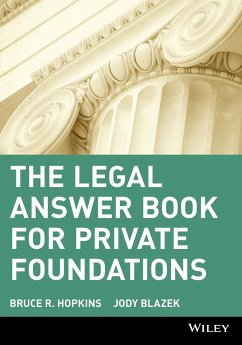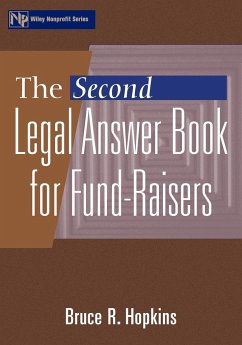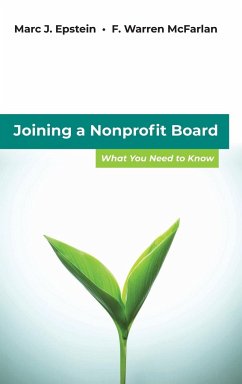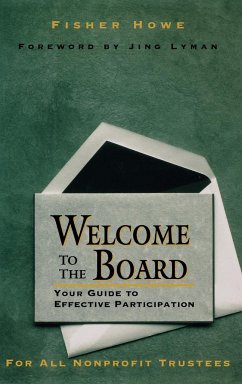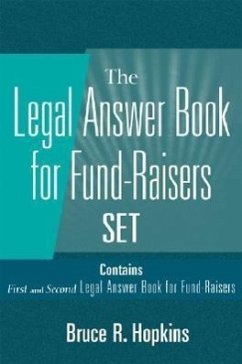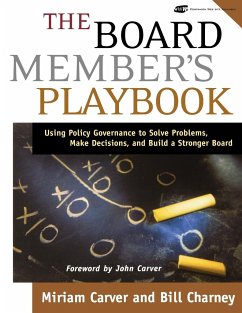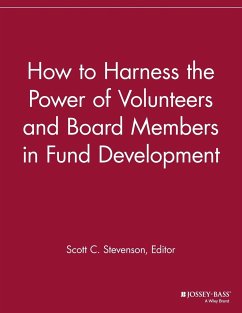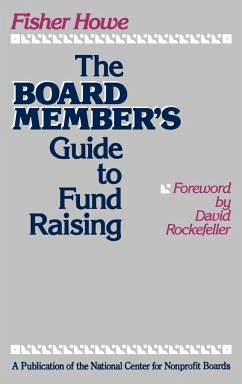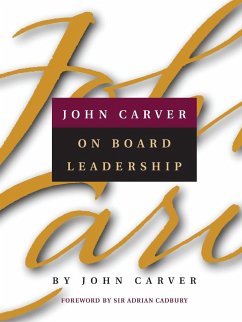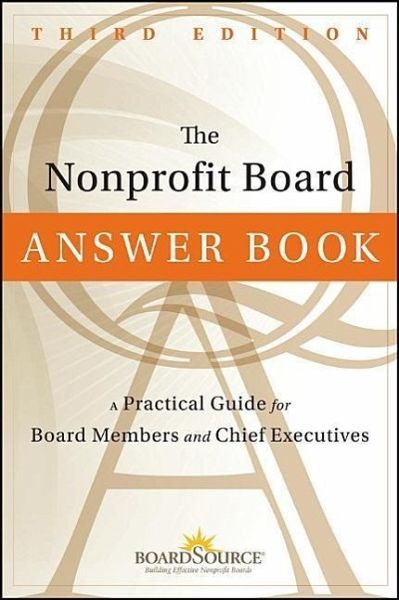
The Nonprofit Board Answer Book
A Practical Guide for Board Members and Chief Executives
Versandkostenfrei!
Versandfertig in über 4 Wochen
41,99 €
inkl. MwSt.
Weitere Ausgaben:

PAYBACK Punkte
21 °P sammeln!
Praise for the third edition of The Nonprofit Board Answer Book "This third edition of The Nonprofit Board Answer Book is an excellent resource guide for new and experienced nonprofit board members alike. Grounded in recent research and updated to reflect the changing demands of our times, this edition addresses both the basic questions and offers important new insights with practical answers and action ideas that are presented in a clear and succinct manner. The new Answer Book is a resource that every board leader and member will value having in their library." --David O. Renz, Beth K. Smith...
Praise for the third edition of The Nonprofit Board Answer Book "This third edition of The Nonprofit Board Answer Book is an excellent resource guide for new and experienced nonprofit board members alike. Grounded in recent research and updated to reflect the changing demands of our times, this edition addresses both the basic questions and offers important new insights with practical answers and action ideas that are presented in a clear and succinct manner. The new Answer Book is a resource that every board leader and member will value having in their library." --David O. Renz, Beth K. Smith/Missouri Chair in Nonprofit Leadership; director, Midwest Center for Nonprofit Leadership, Henry W. Bloch School of Management, University of Missouri-Kansas City; and editor of the Handbook of Nonprofit Leadership and Management "A better, more accessible overview of nonprofit board governance simply does not exist. The Nonprofit Board Answer Book, with its accessible format of 85 questions and answers, addresses every conceivable challenge all nonprofit boards, as well as their key staff, must eventually confront--from ensuring that fundraising is on the board's radar to outlining how new board members should be oriented (to what, for many of them, is uncharted territory) to providing recommendations on how best to navigate the often awkward relations between the board and management. This book is essential reading (and re-referencing) for anyone serious about the role of the board in today's nonprofit world." --Doug White, academic director, Heyman Center for Philanthropy and Fundraising, New York University; and author, The Nonprofit Challenge "The Nonprofit Board Answer Book is a comprehensive guide for small and large nonprofit organizations. The format centered around critical questions and answers makes the information very accessible. Any question a board has about governance can be answered in this book. I was particularly impressed with the activities listed after each question. I would highly recommend The Nonprofit Board Answer Book to nonprofit organizations." --Carol Goss, president and CEO, the Skillman Foundatione




